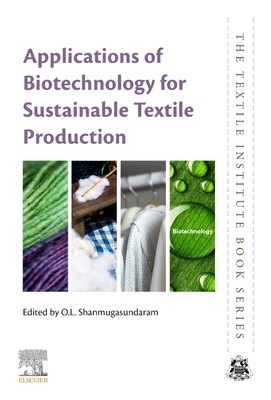
- We will send in 10–14 business days.
- Publisher: Woodhead Publishing
- ISBN-10: 0323856519
- ISBN-13: 9780323856515
- Format: 15.2 x 22.9 x 1.5 cm, softcover
- Language: English
- SAVE -10% with code: EXTRA
Applications of Biotechnology for Sustainable Textile Production (e-book) (used book) | bookbook.eu
Reviews
Description
Applications of Biotechnology for Sustainable Textile Production is a practical guide to the fundamentals, methods, and future prospects for sustainable biotechnological and nanobiotechnological approaches to textile production.
The textile industry is highly motivated to reduce its use of natural resources, reduce waste, and cost. Processes such as dyeing, printing and finishing fabrics traditionally require a lot of water and can produce hazardous wastes as a by-product. In order to help improve these processes, this book evaluates different technologies, comparing them as ways of saving water, energy, material waste, and time, in addition to the reduction of wastewater and sludge. Technologies investigated include enzymatic treatments, ultrasonic treatments, advanced cotton fiber pre-treatment to increase dye receptivity, nano-biotechnology, plasma technology, and foam technology in the finishing process. Health risk assessments and complications resulting from usage of chemicals and other traditional processing technologies are also examined.
EXTRA 10 % discount with code: EXTRA
The promotion ends in 19d.15:26:57
The discount code is valid when purchasing from 10 €. Discounts do not stack.
- Publisher: Woodhead Publishing
- ISBN-10: 0323856519
- ISBN-13: 9780323856515
- Format: 15.2 x 22.9 x 1.5 cm, softcover
- Language: English English
Applications of Biotechnology for Sustainable Textile Production is a practical guide to the fundamentals, methods, and future prospects for sustainable biotechnological and nanobiotechnological approaches to textile production.
The textile industry is highly motivated to reduce its use of natural resources, reduce waste, and cost. Processes such as dyeing, printing and finishing fabrics traditionally require a lot of water and can produce hazardous wastes as a by-product. In order to help improve these processes, this book evaluates different technologies, comparing them as ways of saving water, energy, material waste, and time, in addition to the reduction of wastewater and sludge. Technologies investigated include enzymatic treatments, ultrasonic treatments, advanced cotton fiber pre-treatment to increase dye receptivity, nano-biotechnology, plasma technology, and foam technology in the finishing process. Health risk assessments and complications resulting from usage of chemicals and other traditional processing technologies are also examined.


Reviews